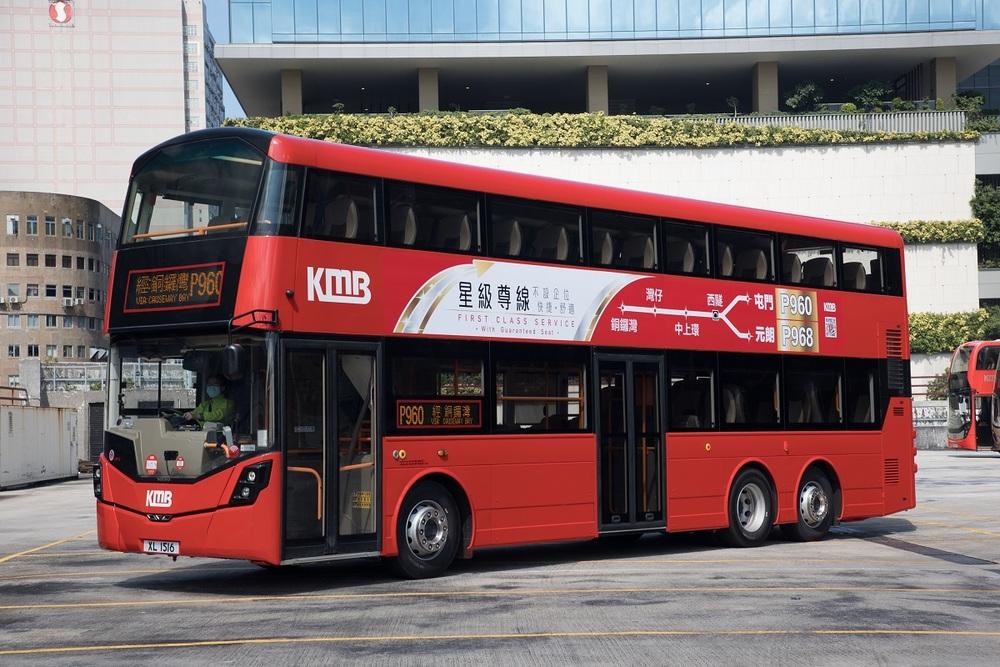Quomodo facitur
IftheMotherBoardisacity,thenthebusislikeabusinthecity,whichcanbetransmittedbackandforthaccordingtoafixedroute.Operatingbit(bit).Alinecanonlyberesponsiblefortransmittingonebitatthesametime.Therefore,multiplelinesmustbeusedatthesametimetotransmitmoredata,andthenumberofdatathatthebuscantransmitatthesametimeiscalledwidth,inbits,thelargerthebuswidth,thebetterthetransmissionperformance.Thebusbandwidth(thatis,thetotalnumberofdatathatcanbetransmittedperunittime)is:busbandwidth=frequencyxwidth(Bytes/sec).Whenthebusisidle(otherdevicesareconnectedtothebusinahigh-impedancestate)andadevicewantstocommunicatewiththetargetdevice,thedevicethatinitiatesthecommunicationdrivesthebusandsendsoutaddressesanddata.Ifotherdevicesconnectedtothebusinahigh-impedancestatereceive(orcanreceive)theaddressinformationthatmatchestheirown,theywillreceivethedataonthebus.Thesendingdevicecompletesthecommunicationandgivesupthebus(theoutputbecomesahighimpedancestate).
Apubliclineorchannelusedinacomputertoconnectvariousfunctionalcomponentsandtransmitdatabetweenthem.Accordingtotheconnectedobjectsinthecomputersystem,thebuscanbedividedinto:Chipbus,alsoknownasthedevice-levelbus,whichisthebusinsidethecentralprocessingunitchip.Internalbus,alsoknownassystembusorboard-levelbus,isthetransmissionpathbetweenthefunctionalunitsofthecomputer.Microcomputerbusisusuallycalledinternalbus.Externalbus,alsoknownascommunicationbus,isatransmissionpathbetweencomputersystemsorbetweenacomputerhostandperipheraldevices.
Thebusisashareddatatransmissiondevice.Althoughmultipledevicescanbeconnectedtothebus,usuallyonlyonepairofdevicescanparticipateindatatransmissionatanyonetime.Accordingtotheformofinformationtransmission,thebuscanbedividedintotwotypes:parallelbusandserialbus.Parallelbususesntransmissionlinestotransmitn-bitbinaryinformationatthesametime.Itischaracterizedbyfasttransmissionspeed,butthesystemstructureismorecomplicated.Itisusedfortheconnectionbetweenvariouscomponentsinthecomputersystem;serialbussharesmulti-bitbinaryinformationOnatransmissionline,multiplebitsofbinaryinformationpassthroughthebusinchronologicalorder.Itischaracterizedbyasimplestructure,butitstransmissionspeedisrelativelyslow.Thebusmusthaveaclearspecification:Bustimingprotocol,thatis,certaintimingrulesmustbeobservedwhentransmittinginformationonthebus,suchassynchronousbustiming,asynchronousbustiming,semi-synchronousbustiming,etc.Thephysicalcharacteristicsofthebus,includingtheelectricalcharacteristicsofsignals,powersupplies,andaddresses,aswellasthemechanicalcharacteristicsofconnectionsandconnectors.Busbandwidth,itisthehighesttransferratethatthebuscanreach,anditsunitisMB/S.
Buscharacteristics
Becausethebusisasetofsignallinesconnectingvariouscomponents.Theinformationisrepresentedbythesignalonthesignalline,andtheoperationcanbeagreeduponbyagreeingonthesequenceofdifferentsignals.Thecharacteristicsofthebusareasfollows
(1)Physicalcharacteristics:Physicalcharacteristicsarealsoknownasmechanicalcharacteristics,whichrefertosomecharacteristicsshownbythecomponentsonthebuswhentheyarephysicallyconnected,suchasplugsandsockets.Geometry,shape,numberofpinsandarrangementorder,etc.
(2)Functionalcharacteristics:Functionalcharacteristicsrefertothefunctionofeachsignalline,suchastheaddressbususedtorepresenttheaddresscode.Thedatabusisusedtorepresentthetransmitteddata,andthecontrolbusrepresentsthecommandsandstatusofoperationsonthebus.
(3)Electricalcharacteristics:Electricalcharacteristicsrefertothesignaldirectionofeachsignallineandtheeffectivelevelrangeofthesignal.Usually,themainequipment(suchasCPU)Thesignalsentoutiscalledtheoutputsignal(OUT),andthesignalsenttothemaindeviceiscalledtheinputsignal(IN).Generally,datasignalsandaddresssignalsdefinehighlevelaslogic1andlowlevelaslogic0.Thereisnoconventionalconventionforcontrolsignals.Forexample,WEmeanslowlevelisvalid,andReadymeanshighlevelisvalid.Thereisnouniformregulationforthehighandlowlevelrangesofdifferentbuses,andtheyareusuallyconsistentwithTTL.
(4)Timecharacteristics:Timecharacteristicsarealsocalledlogiccharacteristics,whichrefertowhenthesignaloneachsignallineisvalidduringthebusoperation,anditisvalidthroughthissignalThetimingrelationshipagreementensuresthecorrectoperationofthebus.Inordertoimprovethescalabilityofthecomputerandtheversatilityofcomponentsandequipment,inadditiontotheon-chipbus,eachcomponentordeviceisconnectedtothebusinastandardizedform,andinformationtransmissiononthebusisrealizedinastandardizedway.Thesestandardizedconnectionformsandoperationmodesofthebusarecollectivelyreferredtoasbusstandards.SuchasISA,PCI,USBbusstandards,etc.Correspondingly,thebusesusingthesestandardsareISAbus,PCIbus,USBbus,etc.
Busclassification
Buscanbedividedintofivemajortypesaccordingtofunctionsandspecifications:
DataBus:TransferdatathatneedstobeprocessedorneedstobestoredbackandforthbetweenCPUandRAM.
AddressBus:UsedtospecifytheaddressofthedatastoredinRAM(RandomAccessMemory).
ControlBus:Transmitthesignalofthemicroprocessorcontrolunit(ControlUnit)toperipheralequipment.
ExpansionBus:Thebusfordatacommunicationbetweenexternaldevicesandthecomputerhost,suchasISAbusandPCIbus.
LocalBus:Anexpansionbusthatreplaceshigher-speeddatatransmission.
ThedatabusDB(DataBus), oratio AB(AddressBus) and controlbusCB(ControlBus)are etiam collective refertur ad systema, quod est theus, de quo supra.
Insomesystems,thedatabusandtheaddressbusaremultiplexed,thatis,thesignalthatappearsonthebusatcertainmomentsrepresentsdataandothermomentsrepresentaddresses;andsomesystemsareseparate.Theaddressbusanddatabusofthe51seriessingle-chipmicrocomputeraremultiplexed,whilethebusinthegeneralPCisseparate.
"DataBusDB"isusedtotransmitdatainformation.Thedatabusisatwo-waythree-statebus,thatis,itcantransmitdatafromtheCPUtoothercomponentssuchasamemoryorI/Ointerface,andcanalsotransmitdatafromothercomponentstotheCPU.Thenumberofbitsofthedatabusisanimportantindicatorofthemicrocomputer,anditisusuallyconsistentwiththewordlengthofthemicro-processing.Forexample,thewordlengthoftheIntel8086microprocessoris16bits,anditsdatabuswidthisalso16bits.Itshouldbepointedoutthatthemeaningofdataisbroad.Itcanberealdata,instructioncodeorstatusinformation,andsometimesevencontrolinformation.Therefore,inactualwork,whatistransmittedonthedatabusisnotnecessarilyIt'sjustdatainthetruesense.
Communidata sunt ISA (ISAbus), EISA, VESA, PCI, etc.
"AddressbusAB"isspeciallyusedtotransmitaddresses.SincetheaddresscanonlybetransmittedfromtheCPUtotheexternalmemoryorI/Oport,theaddressbusisalwaysone-waythree-state,whichisdifferentfromthedataThebusisdifferent.ThenumberofbitsoftheaddressbusdeterminesthesizeofthememoryspacethatcanbedirectlyaddressedbytheCPU.Forexample,iftheaddressbusofan8-bitmicrocomputeris16bits,themaximumaddressablespaceis2^16=64KB,andthe16-bitmicrocomputer(x-bitprocessingThedevicereferstothenumberofbits(1,0)thatthemicroprocessorcanhandleinoneclockcycle,thatis,thewordlength).Theaddressbusis20bits,anditsaddressablespaceis2^20=1MB.Generallyspeaking,iftheaddressbushasnbits,theaddressablespaceis2^nbytes.
"ControlbusCB"isusedtotransmitcontrolsignalsandtimingsignals.SomeofthecontrolsignalsaresentbythemicroprocessortothememoryandI/Ointerfacecircuits,suchasread/writesignals,chipselectsignals,interruptresponsesignals,etc.;therearealsoothercomponentsthatarefedbacktotheCPU,suchasinterruptrequestsignals,resetSignals,busrequestsignals,equipmentreadysignals,etc.Therefore,thetransmissiondirectionofthecontrolbusisdeterminedbythespecificcontrolsignal,(information)isgenerallybidirectional,andthenumberofbitsofthecontrolbusshouldbedeterminedaccordingtotheactualcontrolneedsofthesystem.Infact,thespecificsituationofthecontrolbusmainlydependsontheCPU.
Accordingtothewayoftransmittingdata,itcanbedividedintoserialbusandparallelbus.Intheserialbus,thebinarydataissenttothedestinationdevicethroughadatalinebitbybit;thedatalinesoftheparallelbususuallyexceedtwo.CommonserialbusesincludeSPI,I2C,USBandRS232.
Accordingtowhethertheclocksignalisindependent,itcanbedividedintoasynchronousbusandanasynchronousbus.Theclocksignalofthesynchronousbusisindependentofthedata,whiletheclocksignaloftheasynchronousbusisextractedfromthedata.SPIandI2Caresynchronousserialbuses,andRS232usesasynchronousserialbuses.
Internalbus
Concurrency
CAMAC, usedinstrumentdetectionsystem
IndustryStandardArchitectureBus(ISA)
ExtendedISA(EISA)
LowPinCount (LPC)
MicroChannel(MCA)
MBus
Multibus,Usedinindustrialproductionsystems
NuBus,orIEEE1196
OPTilocalbus, usedinearlyIntel80486motherboards
PeripheralComponentInterconnectBus(PCI)
S-100bus (S-100bus), orIEEE696,Usedin Altairorsimilarmicroprocessores
SBusorIEEE1496
VESAlocalbus(VLB,VL-bus)
VERSAmoduleEurocardbus(VMEbus)
STDbus(STDbus),usedforeightortenSix-bitmicroprocessorsystematis
Unibus
Q-Bus
PC/104
PC/104Plus
PC/04Express
PCI-104
Plu-104
Vide
1-Wire
HyperTransport
I²C
VidePCI(PCIe)
Videperipheralinterfacebus(SPIbus)
FireWirei.Link(IEEE1394)
Externalbus
ExternalbusreferstothecableandconnectorsystemusedtotransmitdataandcontrolspecifiedbyI/OpathtechnologySignal,inadditiontoabusterminationresistororcircuit,thisterminationresistorisusedToreducethesignalreflectioninterferenceonthecable.
Concurrency
ATA:Disk/tapeperipheralaccessorybus,alsonotasPATA,IDE,EIDE,ATAPI,etc.
HIPPI (HIghPerformanceParallelInterface): High speedparallelinterface.
IEEE-488:AlsoknownasGPIB(General-PurposeInstrumentationBus)orHPIB(Hewlett-PackardInstrumentationBus).
PCcard:Formerlyknownasthewell-knownPCMCIA,itisoftenusedinnotebookcomputersandotherportabledevices,butsincetheintroductionofUSBandembeddednetworks,thisThebusisslowlynolongerused.
SCSI (SmallComputerSystemInterface): smallcomputersysteminterface, disci/tapeperipheralaccessorybus.
Vide
USBUniversalVideBus,alargenumberofexternaldevicesusethisbus
VideAttachedSCSIandotherserialSCSIbuses
VideATA
ControllerAreaNetwork("CANbus")
EIA-485
FireWire
Fulmen
Computerbus
Computerbusisasetofinformationtransmissionlinesthatcanbesharedbymultiplecomponentsintime,usedtoconnectmultiplecomponentsandprovideinformationforthemExchangepath.Thebusisnotonlyasetofsignallines,inabroadsense,thebusisasetoftransmissionlinesandrelatedbusprotocols.
a.Mainboardbus
Incomputerscienceandtechnology,peopleoftendescribethebusfrequencyinMHz.Therearemanytypesofcomputerbuses.TheEnglishnameofthefrontsidebusisFrontSideBus,whichisusuallyrepresentedbyFSB,whichisthebusthatconnectstheCPUtotheNorthBridgechip.Thecomputer'sfront-sidebusfrequencyisjointlydeterminedbytheCPUandtheNorthbridgechip.
b.Harddiskbus
GenerallythereareSCSI,ATA,SATAandsoon.SATAistheabbreviationofVideATA.WhyuseVideATAistostartwithPATA-theshortcomingsofParallelATA.WeknowthatthedatalinesofATAorordinaryIDEharddiskswereoriginally40cables.These40cableshavedatalines,clocklines,controllines,andgroundlines.Amongthem,32datalinesaretransmittedinparallel(oneclockcycle).Cantransmit4bytesofdataatthesametime),sotherequirementsforsynchronizationareveryhigh.Thisiswhy80harddiskdatacablesmustbeusedstartingfromthePATA-66(thatis,DMA66)interface.Infact,theadded40cablesareallgroundcablesforshielding,andtheyareonlygroundedononesideofthemotherboard(donotconnectOnthecontrary,iftheshieldingeffectisreversed,theshieldingeffectwillbegreatlyreduced),andthetransmissionspeedoftheshieldedharddiskcanreach66MB/s,100MB/sandthehighest133MB/s.However,afterPATA-133,theparalleltransmissionspeedhasreacheditslimit,andthethreemajorshortcomingsofPATAarefullyexposed:thelengthofthesignallinecannotbeextended,thesignalsynchronizationisdifficulttomaintain,andthe5Vsignallineconsumesalotofpower.ThenwhythedatacableoftheSCSI-320interfacecanreachthehighspeedof320MB/s,andthecablecanbeverylong?HaveyounoticedthatSCSIhigh-speeddatalinesare"flowerlines"?Thisisnottolookgood,the"flower"partisactuallyasetofdifferentialsignallinestwistedinpairs.Thiscostisnotsomethingordinarycomputersystemsarewillingtobear.
c.Otherbuses
Aliis in thecomputa include: UniversalVideBus (UniversalVideBus), IEEE1394, PCI, etc.
Technicalindicators
1 .Thebandwidthofthebus(busdatatransferrate)
ThebandwidthofthebusreferstotheunittimeTheamountofdatatransmittedonthebus,thatis,themaximumsteady-statedatatransmissionrateofMBtransmittedpersecond.Twofactorscloselyrelatedtothebusarethebitwidthofthebusandtheworkingfrequencyofthebus.Therelationshipbetweenthem:
Thebandwidthofthebus=theworkingfrequencyofthebus*thebitwidthofthebus/8
Orbusbandwidth=(busbitwidth/8)/buscycle
2,busbitwidth
busbitWidthreferstothenumberofbitsofbinarydatathatthebuscantransmitatthesametime,orthenumberofbitsofadatabus,thatis,theconceptofbuswidthssuchas32bitsand64bits.Thewiderthebitwidthofthebus,thegreaterthedatatransferratepersecond,andthewiderthebandwidthofthebus.
3.Theworkingfrequencyofthebus
TheworkingclockfrequencyofthebusisinMHZ.Thehighertheworkingfrequency,thefasterthebusworkingspeedandthebusbandwidth.Wider.
Reasonablecollocation
Themotherboardnorthbridgechipisresponsibleforcontactingthememory,graphicscardandothercomponentswiththelargestdatathroughput,andconnectswiththesouthbridgechip.TheCPUisconnectedtothenorthbridgechipthroughthefrontsidebus(FSB),andthenexchangesdatawiththememoryandthegraphicscardthroughthenorthbridgechip.Thefront-sidebusisthemostimportantchannelfortheCPUtoexchangedatawiththeoutsideworld.Therefore,thedatatransmissioncapabilityofthefront-sidebushasagreateffectontheoverallperformanceofthecomputer.Themaximumbandwidthofdatatransmissiondependsonthewidthandtransmissionfrequencyofallsimultaneouslytransmitteddata,thatis,databandwidth=(busfrequency×databitwidth)÷VIII.Thefront-sidebusfrequenciesthatcanbeachievedonthePCare266MHz,333MHz,400MHz,533MHz,800MHz.Thelargerthefront-sidebusfrequency,thegreaterthedatatransmissioncapacitybetweentheCPUandtheNorthbridgechip,andthemoretheCPUcanbefullyutilized.Function.CPUtechnologyhasdevelopedrapidly,andcomputingspeedhasincreasedrapidly,andalargefront-sidebuscanguaranteeenoughdatatobesuppliedtotheCPU,andalowerfront-sidebuswillnotbeabletosupplyenoughdatatotheCPU,whichlimitstheperformanceoftheCPU.,Becomeasystembottleneck.
Busoperation
Oneoperationprocessofthebusistocompletethetransferofinformationbetweentwomodules.Themastermodulestartstheoperationprocess,andtheotheristheslavemodule.Onlyonemainmoduleonthebuscanoccupythebusatacertaintime.
Operationstepsofthebus:
Themainmoduleappliesforbuscontrol,andthebuscontrollermakesaruling.
Operationstepsofthebus:
Themastermodulewilladdresstheslavemoduleafterobtainingthebuscontrolright,andthentheslavemodulewillconfirmthedatatransmission.
Errorcheckingofdatatransmission.
Bustimingprotocol:Thetimingprotocolcanensurethatthetwosidesofthedatatransmissionaresynchronizedinoperationandthetransmissioniscorrect.Therearethreetypesoftimingprotocols:
Synchronousbustiming:Allmodulesonthebussharethesameclockpulsetocontroltheoperationprocess.Allactionsofeachmodulearegeneratedatthebeginningoftheclockcycle,andmostactionsarecompletedinoneclockcycle.
Asynchronousbustiming:Theoccurrenceoftheoperationisdeterminedbythespecificsignalofthesourceordestinationmodule.Theoccurrenceofaneventonthebusdependsontheoccurrenceofthepreviousevent,andthetwopartiesprovidecommunicationsignalstoeachother.
Bustimingprotocol
Semi-synchronousbustiming:Thetimeintervalofeachoperationonthebuscanbedifferent,butitmustbeanintegermultipleoftheclockcycle.Theappearanceofthesignal,thesamplingandtheendarestillThepublicclockisthereference.TheISAbususesthistimingmethod.
Datatransmissiontype:dividedintosinglecyclemodeandburstmode.
Singlecyclemode:Onlyonedataistransmittedinonebuscycle.
Burstmode:Afterobtainingthecontrolofthemainline,multipledatatransmissionsarecarriedout.Whenaddressing,thefirstaddressofthedestinationisgiven,andthefirstdataisaccessed.Theaddressesofdata2,3todatanareautomaticallyaddressedbasedonthefirstaddressaccordingtocertainrules(suchasautomaticallyadding1).
Busstandard
Whydevelopabusstandard?
Itisconvenientfortheexpansionofmachinesandtheadditionofnewequipment.Thereisabusstandard,Differentmanufacturerscanproducechips,modulesandcompletemachineswithdifferentfunctionsaccordingtothesamestandardsandspecifications.Userscanchoosemodulesanddevicesproducedbydifferentmanufacturersandbasedonthesamebusstandardaccordingtotheirfunctionalrequirements.Theycanevenfollowthestandards.Designspecialmodulesandequipmentwithspecialfunctionsbyyourselftoformtheapplicationsystemyouneed.Inthisway,productsatthechiplevel,modulelevel,anddevicelevelarecompatibleandinterchangeable,sothatthemaintainabilityandexpandabilityoftheentirecomputersystemcanbefullyguaranteed.
Thetechnicalspecificationofthebusstandard?
Mechanicalstructurespecification:modulesize,busplug,busconnectorandinstallationsizehaveunifiedregulations.
Functionspecification:Eachsignalline(nameofthepin),functionandworkingprocessofeachbusmusthaveunifiedregulations.
Electricalspecifications: theeffectivelevel,dynamicconversiontime,loadcapacity, etc. ofeachsignalineofthebus.
Whichbusisstandard?
Theprocessor-mainmemorybusonthemotherboardisoftenaspecificdedicatedbus,whiletheI/ObusandbackplanebususedtoconnectvariousI/OmodulesareusuallyavailableinInteroperableindifferentcomputers.Infact,thebackplanebusandI/Obusareusuallystandardbusesandcanbeusedbymanydifferentcomputersmanufacturedbydifferentcompanies.
BusStandard-ISA
ISA(IndustrialStandardArchitecture)busisasystembusstandardestablishedbyIBMin1984fortheintroductionofPC/ATmachines.SoitisalsocalledATbus.
Marisque:
(1)Support64KI/Oaddressspace,16Mmainmemoryaddressspaceaddressing,support15-levelhardinterrupt,7-levelDMAchannel.
(2)isasimplemulti-masterbus.InadditiontotheCPU,DMAcontrollers,DRAMrefreshcontrollers,andintelligentinterfacecontrolcardswithprocessorscanallbecomebusmasterdevices.
(3)Supports8typesofbustransactions:memory lego,memory scribo,I/Oread,I/Oscribe,respondeo,DMAresponse,memoria recrees, negotiatio.
Itsclockfrequencyis8MHz,andthereare98signallinesintotal.Thedatalineisseparatedfromtheaddressline.Thewidthofthedatalineis16bits,whichcantransmit8-bitor16-bitdata,sothemaximumdatatransferrateis16MB/s.
BusStandard-EISA
EISA(ExtendedIndustrialStanderdArchitecture)busisanopenbusstandardexpandedonthebasisofISAbus.Supportmulti-busmastercontrolandbursttransmissionmode.
TheclockfrequencyisVIII.33MHz.Thereare198signallinesintotal,and100lineshavebeenexpandedonthebasisof98linesoftheoriginalISAbus,whichisfullycompatiblewiththeoriginalISAbus.Ithasseparatedatalinesandaddresslines.Thedatalinewidthis32bits,with8-bit,16-bit,and32-bitdatatransmissioncapabilities,sothemaximumdatatransmissionrateis33MB/s.Thewidthoftheaddresslineis32bits,sotheaddressingcapabilityisupto232.Thatis:thesemasterdevicessuchasCPUorDMAcontrollercanaccessthe4Grangeofthemainmemoryaddressspace.
Busstandard-PCI
PCI (PeripheralComponentInterconnect)bus
isahigh-performance32-bitlocalbus.ItwasproposedbyIntelattheendof1991,andlaterjoinedwithmorethan100majorPCmanufacturerssuchasIBMandDECtoestablishthePCIGroupin1992,calledPCISIG,tocoordinateandpromotethePCIstandard.
TheI/Ointerfaceused in altum-speedperipheralsis connexis cum hoste. Usingitsownbusfrequency of33MHz, thedatalinewidthis32bits, quae potest extendere ad 64bits, sothedatatransferrecanreach132MB/s~264MB/s.
Fastspeed,supportunlimitedbursttransmissionmode,supportconcurrentwork(PCIbridgeprovidesdatabuffer,andmakesthebusindependentoftheCPU),andcanbeconnectedtoothersystembuses(suchas:ISA,EISAorMCA)isconnected,thehigh-speeddevicesinthesystemareconnectedtothePCIbus,whilethelow-speeddevicesarestillsupportedbythelow-speedI/ObusessuchasISAandEISA.Itsupportsmicroprocessor-basedconfigurationandcanbeusedinsingle-processorsystemsaswellasmulti-processorsystems.
AdvantagesandDisadvantages
Themainadvantages ofusingthebusstructure
1 .Thememory-orienteddualbusstructurehashigherinformationtransmissionefficiency,Thisisitsmainadvantage.ButwhenboththeCPUandtheI/Ointerfacehavetoaccessthememory,conflictsstilloccur.
2.TheCPUisconnectedtothehigh-speedlocalmemoryandlocalI/Ointerfacethroughahigh-speedlocalbus,andtheslowerglobalmemoryandglobalI/Ointerfaceareconnectedtotheslowerglobalbus.Thus,bothhigh-speedequipmentandslow-speedequipmentaretakenintoconsideration,sothattheydonotinvolveeachother.
3.Simplifiesthehardwaredesign.Itisconvenienttoadoptthemodularstructuredesignmethod.Thebus-orientedmicrocomputerdesignonlyneedstomakecpuplug-in,memoryplug-inandI/Oplug-inaccordingtotheseregulations,andconnectthemtothebustoworkwithoutconsideringthedetailedoperationofthebus.
4.Simplifiedthesystemstructure.Thestructureofthewholesystemisclear.Therearefewconnections,andthebackplaneconnectionscanbeprinted.
5.Thesystemhasgoodscalability.Thefirstisscaleexpansion,whichonlyrequiresmoreplug-insofthesametype.Thesecondisfunctionexpansion.Thefunctionexpansiononlyneedstodesignnewplug-insinaccordancewiththebusstandard,andthereisoftennostrictrestrictiononthepositionwheretheplug-insareinsertedintothemachine.
6.Thesystemupdateperformanceisgood.Becausethecpu,memory,I/Ointerface,etc.areallconnectedtothebusaccordingtothebusprotocol,aslongasthebusisproperlydesigned,newplug-inscanbedesignedatanytimealongwiththeprogressoftheprocessorchipandotherrelatedchips.Thesystemisupdatedonthebottomboard,otherplug-insandbackplaneconnectionsgenerallydonotneedtobechanged.
7.Itisconvenientforfaultdiagnosisandmaintenance.Themainboardtestcardcaneasilyfindthefaultypartandthebustype.
Incommoda ofthebusstructure
BecausethebusissetupbetweentheCPUandthemainmemory,andbetweentheCPUandtheI/Odevice,itimprovesThespeedandefficiencyofinformationtransmissioninthemicrocomputersystemareimproved.However,becausethereisnodirectpathbetweentheexternaldeviceandthemainmemory,theinformationexchangebetweenthemmustbetransferredthroughtheCPU,whichreducestheworkefficiencyoftheCPU(orincreasestheoccupancyrateoftheCPU.Generallyspeaking,theperipheralworkThelessCPUinterventionisrequired,thebetter.ThelessCPUintervention,thelowertheCPUoccupancyrateofthisdevice,indicatingthehigherthedegreeofintelligenceofthedevice.ThisisthemaindisadvantageoftheCPU-orienteddual-busstructure.Italsoincludes:
1 .Theuseofbustransmissionistime-sharing.Whenmultiplemastersapplyfortheuseofthebusatthesametime,arbitrationofthebusmustbecarriedout.
2.Thebandwidthofthebusislimited.Ifahardwaredeviceconnectedtothebusdoesnothavearesourcecontrolmechanism,itwilleasilycauseinformationdelay(thisisfatalinsomeplaceswithstrongimmediacy).

3.Thedeviceconnectedtothebusmusthaveaninformationscreeningmechanism,anditisnecessarytojudgewhethertheinformationispassedtoitself.
Relatedinformation
Anymicroprocessormustbeconnectedtoacertainnumberofcomponentsandperipheraldevices,butifyouuseasetoflinesforeachcomponentandeachperipheraldeviceConnectdirectlywiththeCPU,thentheconnectionwillbeintricateandevendifficulttoimplement.Inordertosimplifythehardwarecircuitdesignandsimplifythesystemstructure,agroupoflinesiscommonlyused,andanappropriateinterfacecircuitisconfiguredtoconnectwithvariouscomponentsandperipheraldevices.Thisgroupofsharedconnectionlinesiscalledabus.Theuseofabusstructurefacilitatestheexpansionofcomponentsandequipment,especiallythedevelopmentofaunifiedbusstandardmakesiteasytointerconnectdifferentequipment.
Thebusinamicrocomputergenerallyincludesaninternalbus,asystembusandanexternalbus.Theinternalbusisthebusbetweentheperipheralchipsinthemicrocomputerandtheprocessor,whichisusedfortheinterconnectionatthechiplevel;whilethesystembusisthebusbetweentheplug-inboardsandthesystemboardinthemicrocomputer,andisusedforthemutualexchangeattheplug-inboardlevel.Theexternalbusisabusbetweenamicrocomputerandanexternaldevice.Asadevice,amicrocomputerexchangesinformationanddatawithotherdevicesthroughthebus.Itisusedfordevice-levelinterconnection.Inaddition,inabroadsense,computercommunicationmethodscanbedividedintoparallelcommunicationandserialcommunication,andthecorrespondingcommunicationbusesarecalledparallelbusesandserialbuses.Parallelcommunicationisfastandhasgoodreal-timeperformance,butitisnotsuitableforminiaturizedproductsduetothelargenumberofportsoccupied.Althoughtheserialcommunicationrateislow,itismoresimpleandconvenientinthemicro-processingcircuitwherethedatacommunicationthroughputisnotverylarge.Convenientandflexible.Videcommunicationcangenerallybedividedintoasynchronousmodeandsynchronousmode.---Withthedevelopmentofmicroelectronicstechnologyandcomputertechnology,bustechnologyisalsoconstantlydevelopingandimproving,sothatthecomputerbustechnologyhasawidevarietyandeachhasitsowncharacteristics.
Thehistoryofbusdevelopment
ISAbus
(IndustryStandardArchitecture)
TheearliestPCbusItisthesystembusadoptedbyIBMinPC/XTcomputersin1981 .Itisbasedonthe8-bit8088processorandiscalledPCbusorPC/XTbus.
In1984,IBMintroducedthePC/ATcomputerbasedonthe16-bitIntel80286processor,andthesystembuswasalsoexpandedto16bit,andwascalledthePC/ATbus.InordertodevelopperipheraldevicescompatiblewiththeIBMPC,theindustrygraduallyestablishedtheISA(IndustryStandardArchitecture)busbasedontheIBMPCbusspecification.
PCIbus
(PeripheralComponentInterconnect)
DuetotheslowspeedoftheISA/EISAbus,thespeedoftheCPUonceappearedHigherthanthebusspeed,theharddisk,displaycardandotherperipheraldevicescanonlysendandreceivedatathroughaslowandnarrowbottleneck,whichseriouslyaffectstheperformanceofthewholemachine.Tosolvethisproblem,whenIntelreleasedthe486processorin1992,italsoproposeda32-bitPCI(peripheralcomponentinterconnect)bus.
AGPbus
(AcceleratedGraphicsPort)
ThePCIbusisasystembusindependentoftheCPU,whichcanconnectthedisplaycard,High-speedperipheralssuchassoundcards,networkcards,andharddiskcontrollersaredirectlyhungontheCPUbus,breakingthebottleneckandmakingtheCPUperformancefullyutilized.Unfortunately,becausethePCIbushasabandwidthofonly133MB/s,itmaybemorethanenoughtodealwithmostinput/outputdevicessuchassoundcards,networkcards,andvideocards,butfor3Dgraphicscardsthathaveagrowingappetite,theyareincapableandbecomeaconstraint.Displaythebottleneckofthesubsystemandtheperformanceofthewholemachine.Therefore,thecomplementofthePCIbus-theAGPbuscameintobeing.
PCI-Express
After10yearsofrepairsandrepairs,thePCIbushasbeenunabletomeettherequirementsofcomputerperformanceenhancement.Itmustbelargerandmoreadaptable.ThenewgenerationbuswithdeeperdevelopmentpotentialisreplacedbythePCI-Expressbus.
ComparedwiththePCIbus,thePCI-Expressbuscanprovideextremelyhighbandwidthtomeettheneedsofthesystem.ThebandwidthofthePCIExpressbus2.0standardisshowninthefollowingtable:
Afterthreeandahalfgenerations(AGPbusisjustanenhancedPCIbus),theexternalbusofPCfinallydevelopedtoPCI-E4.0,Providesamuchlargerbandwidththanthepreviousbus.Asforthefuturedirectionofbusdevelopment,Ibelieveitwillappearsoonaspeople'sdemandforbandwidthcontinuestoincrease.
Terminology
1 . | mediumdistributionbus Intermediadistributionbus |
2. | VESAlocalbus(VL-bus)VESA LocalBus |
3. | Analysis, busbounce Busbounceanalysis |
4. | analogsummingbus Analogadditionbus |
5. | architectura, micro-channelbus (MCA) Micro-channelbus (system) structura |
6. td> | arbitrationbus arbitrationbus |
7. | arbiter, bus Busarbiter |
VIII. | backplanebus Backplanebus |
VIIII. | tergum-off, bus Busexit |
10. | basebus Basebus |
11 . | bus-timingemulation Bustimingemulation |
XII. | bus-intensive Bus-intensive |
XIII. | bus-controlunit Buscontrolunit |
XIIII. | bus, utilitatem Utilitas |
XV. | bus, qu& additionbus |
16. | bus, realtimesystemintegration (RTSIBus) Realtimesystemintegrationbus |
17. | bus, peripheralinterface peripheralinterfacebus |
1VIII. | bus,multisystemextensioninterface(MXIbus) Multisystemextensioninterfacebus |
1VIIII. | bus, multidropparallel Branchparallelbus p> |
20. | bus, micro-canale |
